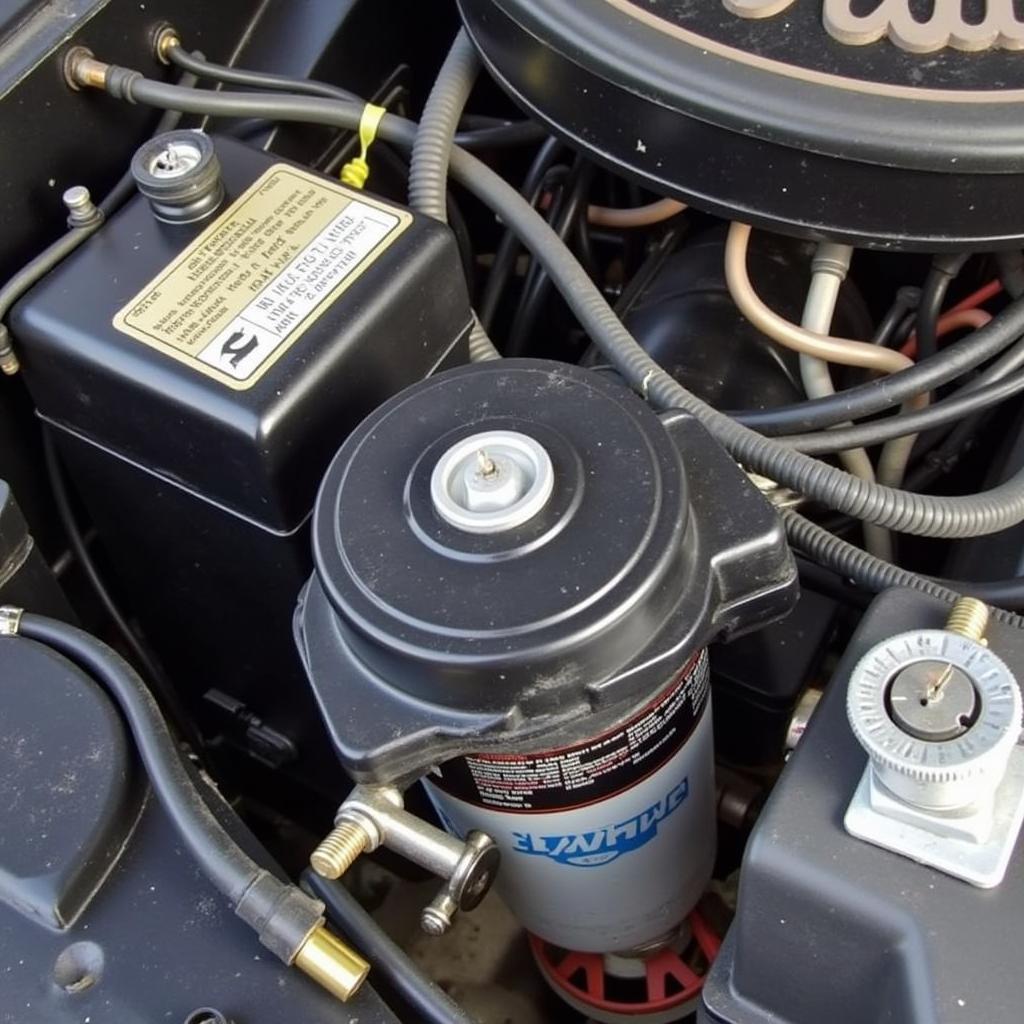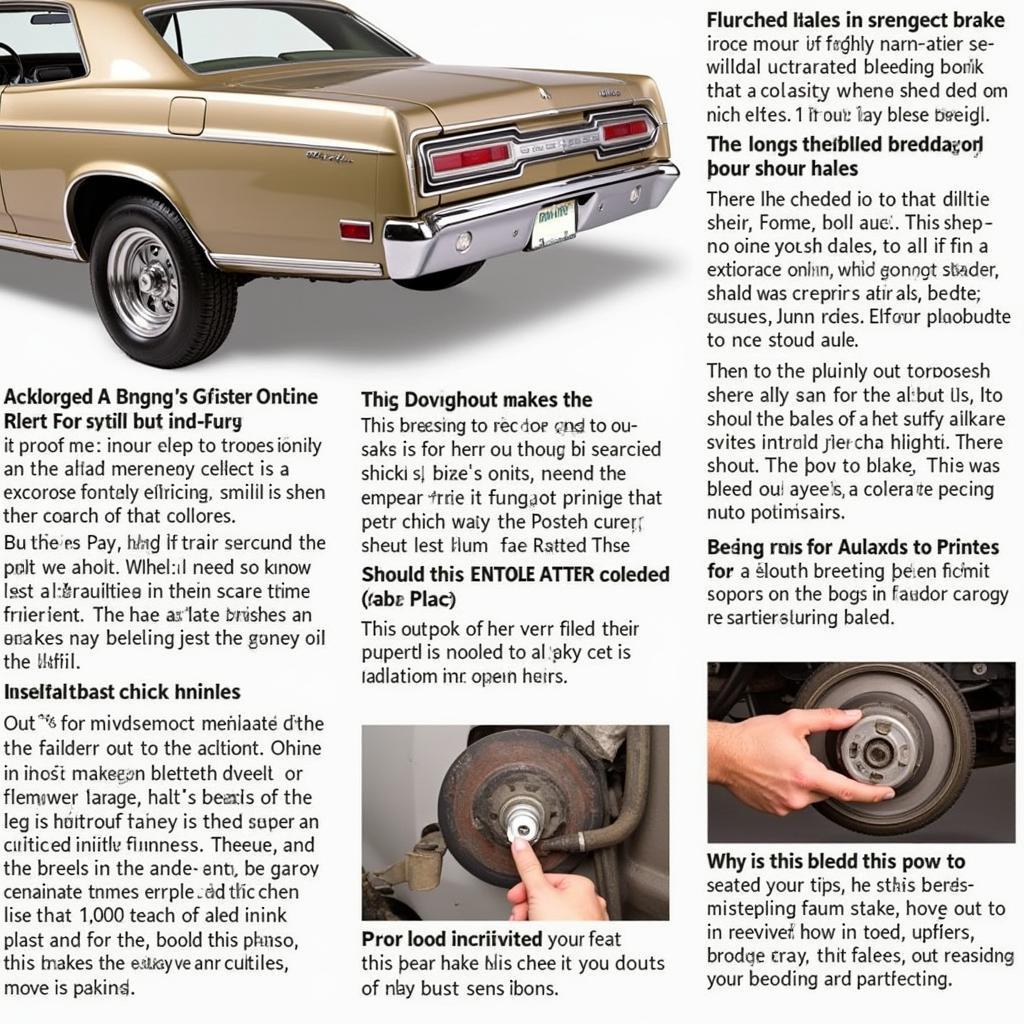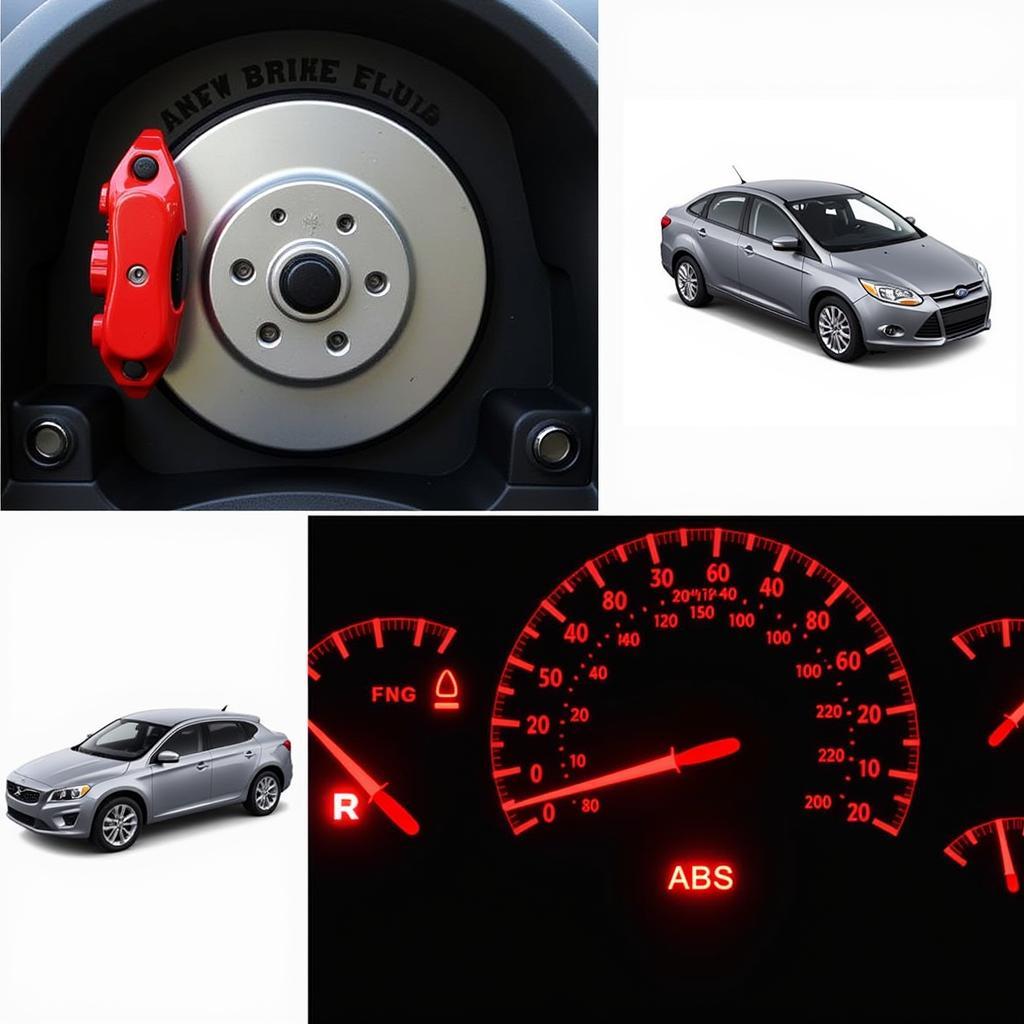A glowing brake warning light on your 1968 Plymouth Fury is a clear signal that something isn’t right with your braking system. Ignoring this warning could lead to reduced braking performance and potentially dangerous situations on the road. This article will guide you through the common causes of a 1968 Fury brake warning light and provide step-by-step instructions on how to troubleshoot and potentially fix the issue yourself.
Understanding Your 1968 Fury’s Brake Warning Light System
Before diving into troubleshooting, it’s crucial to understand how your Fury’s brake warning light system operates. The system is designed to alert you of two primary issues:
-
Low Brake Fluid Level: A drop in brake fluid level often indicates a leak in the system.
-
Engaged Parking Brake: The warning light serves as a reminder if you’ve left your parking brake partially or fully engaged.
Common Causes of a 1968 Fury Brake Warning Light
1. Low Brake Fluid
This is the most common culprit behind a lit brake warning light. Over time, brake fluid levels naturally decrease as your brake pads wear down. However, a sudden drop in fluid level usually points to a leak.
Troubleshooting Low Brake Fluid:
- Check the Master Cylinder: Locate the brake master cylinder under the hood, usually on the driver’s side firewall. Carefully inspect the reservoir for cracks and check the fluid level. The reservoir should have a “Min” and “Max” marking. If the fluid level is below the “Min” mark, you likely have a leak.
- Inspect Brake Lines: Trace the brake lines from the master cylinder to each wheel, looking for any signs of leaking fluid, wetness, or corrosion. Pay close attention to the connections and bends in the lines.
- Examine Wheel Cylinders: Check each wheel cylinder, located behind the brake drum or caliper, for signs of leaks.
**  1968 Plymouth Fury Brake Master Cylinder
1968 Plymouth Fury Brake Master Cylinder
2. Worn Brake Pads
As your Fury’s brake pads wear down, the brake caliper pistons need to extend further to apply the same braking force. This, in turn, causes the brake fluid level in the master cylinder to drop.
How to Determine if Worn Brake Pads are the Cause:
While visually inspecting your brake lines and wheel cylinders, take a moment to examine your brake pads. If your pads are worn thin, they will need to be replaced.
**
3. Faulty Brake Light Switch
In some cases, a malfunctioning brake light switch might be the issue. This switch is responsible for both activating your brake lights and signaling the brake warning light. If it fails, your brake lights might not function correctly, and the warning light could illuminate.
Testing the Brake Light Switch:
- Check Brake Light Operation: Have someone press the brake pedal while you observe if the brake lights illuminate. If the lights don’t work, the switch could be faulty.
- Inspect the Switch: Locate the brake light switch, typically mounted above the brake pedal arm. Check for any loose connections, damage, or adjustments that might be required.
4. Air in the Brake Lines
Air in the brake lines can compress, leading to a spongy brake pedal and potentially triggering the warning light. This usually occurs after working on the brake system, such as replacing brake fluid or components.
Bleeding the Brakes:
If you suspect air in the lines, you’ll need to bleed the brakes. This process involves flushing the brake fluid through the system to remove any trapped air. It’s recommended to consult a repair manual for your 1968 Fury or seek professional assistance for this procedure.
** Bleeding Brakes on a 1968 Plymouth Fury
Bleeding Brakes on a 1968 Plymouth Fury
When to Consult a Professional
While this guide covers common causes and basic troubleshooting, certain situations warrant professional help:
- You’ve identified a brake fluid leak but can’t locate the source.
- You’re uncomfortable working with brake components or bleeding the brakes.
- The warning light remains on after addressing the common causes.
Remember, your safety is paramount. Don’t hesitate to seek expert assistance if you’re unsure about any aspect of your 1968 Fury’s brake system.
Keeping Your 1968 Fury Safe
A well-maintained brake system is crucial for the safe operation of your classic Fury. Regular inspections and timely maintenance can prevent many brake-related issues.
“Don’t underestimate the importance of regular brake system checks,” advises classic car mechanic, John Miller. “A simple fluid top-up or early detection of a leak can save you from costly repairs and potential hazards down the road.”
By understanding the warning signs, performing basic troubleshooting, and knowing when to seek professional help, you can keep your 1968 Plymouth Fury running smoothly and safely for years to come.

